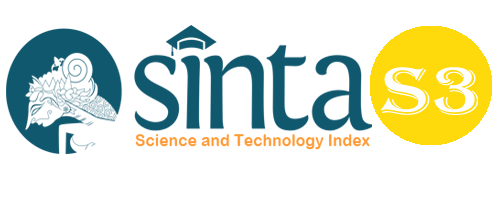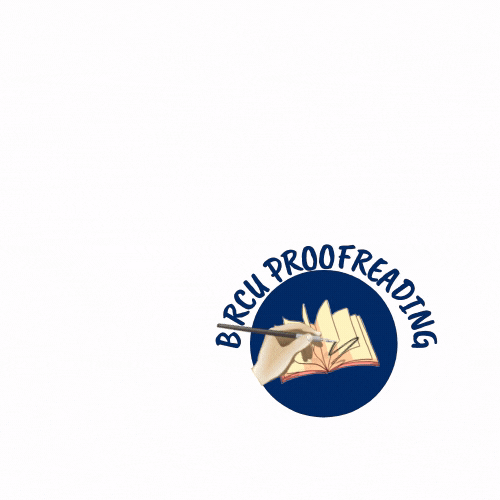Analysis of the Effects of Self-Efficacy Mediation and Organizational Commitment on the Effect of Transformational Leadership Style and Organizational Culture on Employee Performance of PT Sarana Lintas Caraka
Abstract
A company cannot develop optimally if it is not fully supported by qualified and advanced human resources within the company, including PT Sarana Lintas Caraka. The purpose of this study was to examine the mediating effect of self-efficacy and commitment to the effect of transformational leadership style and organizational culture on employee performance and job satisfaction at PT Sarana Lintas Caraka. The research method used in this research is quantitative with Partial Least Square (PLS-SEM) technique and assisted by SmartPLS 3.0 software. The researcher chose the census technique in the sampling technique, namely all members of the population (all PT Sarana Lintas Caraka) were used as samples in this study to examine the mediating effect and the direct influence of the related variables. The results of this study indicate that there is an effect of transformational leadership style on employee performance, there is an influence of organizational culture on employee performance, there is an influence of self-efficacy on employee performance, organizational commitment has no effect on employee performance, self-efficacy is not able to mediate the effect of transformational leadership style on employee performance. Employee performance, self-efficacy is able to mediate the effect of organizational culture on employee performance, organizational commitment is not able to mediate the effect of transformational leadership style on employee performance, organizational commitment is not able to mediate the effect of organizational culture on employee performance. The method of determining the number of respondents' eligibility is using the Hair Method which states that the respondent may be 5 to 10 times the number of research variable indicators.
Keywords
Full Text:
PDFReferences
Ali, N., Ali, S., Ahsan, A., Rahman, W., & Jan Kakakhel, S. (2014). Effects of leadership styles on job satisfaction, organizational citizenship behavior, commitment and turnover intention (empirical study of private sector schools’ teachers). Life Science Journal, 11(SPEC. ISSUE 3), 175–183.
Angelini, C. (2018). Hypothesis testing. In Encyclopedia of Bioinformatics and Computational Biology: ABC of Bioinformatics. https://doi.org/10.1016/B978-0-12-809633-8.20356-7
Apuke, O. D., & Programmes, W. T. (2017). Arabian Journal of Business and Management Review (Kuwait Chapter). October. https://doi.org/10.12816/0040336
Atika, A., Modding, B., Sammaila, B., & Hafied, H. (2019). The effect of commitment, leadership and compensation on job satisfaction and performance of government apparatus in West Sulawesi Province. Management and Economics Journal (MEC-J), 3(1), 1. https://doi.org/10.18860/mec-j.v0i2.6555
Bagis, Fatmah, Utomo Indra Kusumo, A. H. (2021). Job Satisfaction as a Mediation Variables On The Effect Of Organizational Culture And Organizational Commitmen To Employee Performance. 2021(2), 424–434.
Busro, M. (2018). Teori-Teori Manajemen Sumber Daya Manusia. Prendamedia Group.
Edward, Y.R., and Purba, K. (2020). The Effect Analysis of Emotional Intelligence and Work Environment on Employee Performance with Organizational Commitment as Intervening Variables in PT Berkat Bima Sentana. Budapest International Research and Critics Institute-Journal (BIRCI-Journal) Vol 3 (3): 1552-1563.
Efendi, R. (2013). Self Efficacy: Studi Indigenous pada Guru Bersuku Jawa. Journal of Social and Industrial Psychology, Vol. 2(No. 2), 61–67.
Eliyana, A., Ma’arif, S., & Muzakki. (2019). Job satisfaction and organizational commitment effect in the transformational leadership towards employee performance. European Research on Management and Business Economics, 25(3), 144–150. https://doi.org/10.1016/j.iedeen.2019.05.001
Hair, J., Sarstedt, M., Hopkins, L., & Kuppelwieser, V. G. (2017). Partial Least Squares Structural Equation Modeling (Pls-Sem) an Emerging Tool In Business Research.
Hardianto, G. (2014). Hubungan Antara Self-Efficacy dengan Hasil Belajar Siswa. Fakultas Ilmu Pendidikan, Universitas Negeri Padang.
Kemenkeu. (1996). Keputusan Menteri Keuangan. 24 Desember 1996. https://jdih.kemenkeu.go.id/fullText/1996/701~KMK.05~1996KEP.htm
Khahan Na-Nan and Ekkasit Sanamthong. (2019). Self-efficacy and employee job performance support, motivation to transfer and transfer. 37(1), 1–17. https://doi.org/10.1108/IJQRM-01-2019-0013
Krishnan, V. R., & Leadership, T. (2014). Impact of Transformational Leadership on Follower’s Self-efficacy : Moderating Role of Follower’s Impression Management. June. https://doi.org/10.1177/0258042X13513129.
Kuswati, Yeti. (2020). “The Effect of Motivation on Employee Performance”. Budapest International Research and Critics Institute-Journal (BIRCI-Journal), Volume 3, No 2, May 2020, pages: 995-1002
Llorens, J. J., Klingner, D. E., & Nalbandian, J. (2018). Leadership and Employee Performance. Public Personnel Management, October, 201–223. https://doi.org/10.4324/9781315271255-9.
Mangkunegara, A. A. A. P., & Huddin, M. (2016). The Effect of Transformational Leadership and Job Satisfaction on Employee Performance. Universal Journal of Management, 4(4), 189–195. https://doi.org/10.13189/ujm.2016.040404.
Mangkunegara, A. P., & Octorend, T. R. (2015). Effect of Work Discipline, Work Motivation and Job Satisfaction on Employee Organizational Commitment in the Company (Case Study in PT. Dada Indonesia). 3(8), 318–328. https://doi.org/10.13189/ujm.2015.030803.
Nguyen, T. T., Mia, L., Winata, L., & Chong, V. K. (2017). Effect of transformational-leadership style and management control system on managerial performance. Journal of Business Research, 70, 202–213. https://doi.org/10.1016/j.jbusres.2016.08.018.
Njoroge, D. (2015). Transformational leadership style and organizational commitment: the moderating effect of employee partcipation David njoroge.
Pillai, R., Marcos, S., & Williams, E. (2004). Transformational leadership, self-efficacy, group. November 2017. https://doi.org/10.1108/09534810410530584.
Rahyuda, N. M. D. dan K. (2016). Pengaruh Sikap dan Fashion Leadership terhadap Niat Beli Online Remaja di Kota Denpasar. 5(6), 3620–3646.
Ratnasari, S. L., Sutjahjor, G., & Adam. (2019). Employees’ performance: Organizational culture and leadership style through job satisfaction. Humanities and Social Sciences Reviews, 7(5), 597–608. https://doi.org/10.18510/hssr.2019.7569
Rehman, F. U., Tun, U., & Onn, H. (2018). Determining the Influence of Organizational Culture on Employee Performance : The Moderating Role of Self-Efficacy Determining the Influence of Organizational Culture on Employee Performance : The Moderating Role of Self-Efficacy. July.
Robbins, S. P. and T. A. J. (2015). Organizational Behavior (Pearson (ed.); 16th ed.).
Sambung, R. (2016). Dimensi Komitmen Organisasional: Dampaknya terhadap Perilaku Kerja pada Organisasi Sektor Publik. Jurnal Terapan Manajemen Dan Bisnis, 28–37.
Santrock. (2007). Definisi Self Efficacy (Efikasi Diri) Menurut Para AhliDefinisi Self Efficacy (Efikasi Diri) Menurut Para Ahli.
Saputri, M. E. (2016). Pengaruh Perilaku Konsumen Terhadap Pembelian Online Produk Fashion Pada Zalora Indonesia. Jurnal Sosioteknologi. https://doi.org/10.5614/sostek.itbj.2016.15.02.11.
Sazly, S., & Winna, W. (2019). Pengaruh Disiplin Kerja Terhadap Kinerja Pegawai Pada Kantor Kecamatan Cengkareng Jakarta Barat. Jurnal Perspektif, 17(1), 77–83. https://doi.org/10.31294/jp.v17i1.5339.
Septyan, F. B., Musadieq, M. Al, & Mukzam, M. D. (2017). Motivasi Dan Kinerja (Studi Pada Karyawan CV. Jade Indopratama Malang). Jurnal Administrasi Bisnis (JAB), 53(1), 81–88.
ShahidaParveen. (2019). Exploring the Impact of Organizational Commitment on Employees Performance. 21(12), 47–56. https://doi.org/10.9790/487X-2112024756.
Sido, P. T., Kaligawe, M., Taurisa, C. M., & Ratnawati, I. (2012). Analisis Pengaruh Budaya Organisasi dan Kepuasan Kerja terhadap Komitmen Organisasional dalam Meningkatkan Kinerja Karyawan (Studi Pada PT Sido Muncul Kaligawe Semarang). 19(2), 170–187. 19(2), 170–187.
Sudiantha David, Armanu, T. E. A. (2017). The Effects of Transformational Leadership and Personality on Employee Performance in Nissan Malang Mediated By Organizational Commitment. 1(January), 207–215.
Sugiyono. (2013). Metode Penelitian Pendidikan Pendekatan Kuantitatif, Kualitatif, dan R&D (Bandung).
Syardiansah, et al. (2020). The Effect of Job Satisfaction and Organizational Culture on Employee Performance of the Royal Hotel in East Aceh District. Budapest International Research and Critics Institute-Journal (BIRCI-Journal). P. 849-857.
Taherdoost, H., Business, H., Sdn, S., Group, C., & Lumpur, K. (2016). Sampling Methods in Research Methodology ; How to Choose a Sampling Technique for. 5(2), 18–27.
Wahjudewanti, A.S., Tjakraatmaja, J.H., and Anggoro, Y. (2021). Knowledge Management Strategies to Improve Learning and Growth in Creative Industries: A Framework Model. Budapest International Research and Critics Institute-Journal (BIRCI-Journal) Vol 4 (2): 1903-1915.
Wulandari, R., Djawoto, and Prijati. (2021). The Influence of Delegative Leadership Style, Motivation, Work Environment on Employee Performance in Self-Efficiency Mediation in SNVT Housing Provision of East Java Province. Budapest International Research and Critics Institute-Journal (BIRCI-Journal) Vol 4 (3): 3294-3311.
Yusup, F. (2018). Uji Validitas dan Reliabilitas Instrumen Penelitian Kuantitatif. Jurnal Tarbiyah : Jurnal Ilmiah Kependidikan. https://doi.org/10.18592/tarbiyah.v7i1.2100.
Zulkosky, K. (2009). Self-Efficacy: A Concept Analysis.
DOI: https://doi.org/10.33258/birci.v5i1.4387
Article Metrics
Abstract view : 395 timesPDF - 114 times
Refbacks
- There are currently no refbacks.

This work is licensed under a Creative Commons Attribution-ShareAlike 4.0 International License.

This work is licensed under a Creative Commons Attribution-ShareAlike 4.0 International License.

_.gif)

















_.gif)



